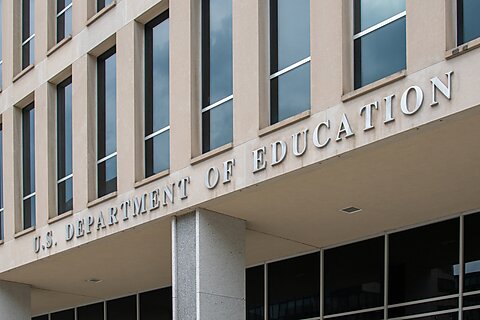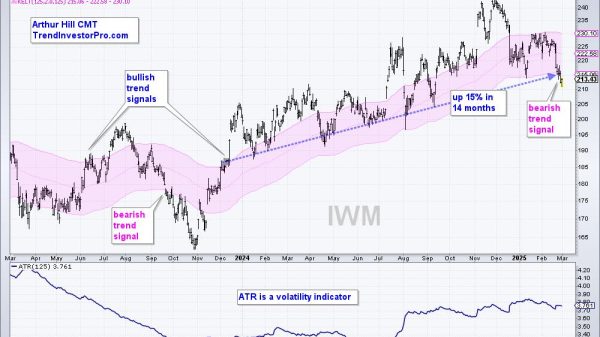Alex Nowrasteh
The immigration system of the United States favors family reunification even in the so‐called employment‐based (EB) green card categories. Under current interpretations of US immigration law, family members of immigrant workers must use EB green cards. The American system isn’t unusual as Japan, Spain, and Ireland are the only OECD countries with more immigrants who enter on visa categories as workers than immigrants who enter on visas for family members.
Still, the difference is more significant in the United States than in other countries. Instead of a separate green card category for the spouses and children of workers, those family members get a green card that would otherwise have gone to a skilled worker. This should change without reducing family‐based immigration.
In 2022, 55 percent of EB green cards went to the family members of workers (Figure 1). The workers themselves received the other 45 percent. Those percentages are similar to 2020 and 2021. Some of those family members who received EB green cards are workers, and many of them are highly skilled since skilled people tend to marry each other, so this isn’t a neat de facto division.
Another thing to note is that Congress capped the EB green card category at 140,000 per year, but the federal government issued 270,284 in 2022. The government was able to issue more EB green cards because immigration law allows unused green cards in other categories to be used for immigrants who have applied for EBs. Unused family‐based green cards from 2021 were reallocated to adjust the statuses of EB green card applicants already in the United States on other visas. This process will reallocate almost 60,000 additional green cards from the family‐based to the EB green card categories in 2023.
EB green cards are in five categories separated by the type of worker or investor and their family members. EB‑1 green cards are for workers of extraordinary ability, outstanding professors and researchers, and some multinational firm managers and executives. EB‑2 green cards are for professional workers with advanced degrees and those with exceptional ability in the sciences, arts, or business. EB‑3 green cards are for skilled worker, professionals, or other workers. EB‑4 is for religious workers, certain broadcasters, some foreign employees of the U.S. government, and others. EB‑5 is for a narrow class of investors. All EB categories also include their family members by convention, not according to statute or regulation.
Family‐based immigration is important for social, economic, and ethical reasons. To ensure that family‐based immigration is not hindered by the numerical cap of EB green cards, Congress should either exempt family members from the cap or create a new category for them. This will prevent the reduction of workers by the same number of family members. By doing so, an additional 147,017 immigrant workers could have earned a green card in 2022, which would have resulted in a 120 percent increase without adjusting the cap number for that green card category.
Eighty‐two percent of those who received an EB green card in 2022, or 221,373, were already legally living in the United States (Figure 2). That’s down from 2021, when 92 percent were adjustments of status: those who are already legally present and have received their green cards can adjust their immigration status from another type of visa, like an H‑1B or an F visa, to an EB green card.
Exempting those adjustments of status from the EB green card cap would boost the number of highly skilled workers who could have entered from abroad by a factor of 4.5, from a mere 48,905 up to the statutory cap. Figure 3 gives more detail.
Exempting adjustment of status from the EB green card cap would increase the number of green cards for the EB‑1 and EB‑2 categories the most (Figure 4). In 2022, 89 percent of immigrants who received an EB‑1 and 95 percent of those who received an EB‑2 were adjustments of status. Exempting adjustments of status from the cap would have increased the number in these two categories by 151,219. Workers on the EB‑1 and the EB‑2 are the most skilled, so increasing the numbers available would have the biggest positive economic effect while increasing the number of green cards in other categories through the trickle‐down.
Going forward, exempting adjustments of status from the EB green card cap would also deplete the 1.8 million green card backlog imposed by the per‐country caps. The backlog would fall at the speed of administrative processing unhindered by arbitrary annual caps. Such a reform would especially benefit Indian workers on the H‑1B visa by shortening their wait times without increasing the wait time for immigrants from other countries.
Exempting adjustments of status, rather than tinkering with the numerical cap or getting rid of the per‐country caps, is the best policy for two reasons. First, the green card system would be more open and flexible. Second, it would avoid the debate over which arbitrary number should be the new EB green card cap. Congress should eliminate the per‐country cap, but exempting adjustments of status would achieve the same goal of reducing wait times for Indian immigrants without increasing them for others.
Here are some other exemption options for increasing the number of EB green cards issued annually without raising the overall numerical cap:
Workers should be exempted from the EB green card cap if they have a higher level of education, like a graduate degree or a PhD. Workers should be exempted from the cap if they have a graduate degree or a PhD in particular fields, such as science, technology, engineering, mathematics, or medicine. The House version of the America COMPETES Act did this in 2022. Some workers who adjust their status should be exempted from the numerical cap in the way the H‑1B visa exempts 20,000 graduates of American universities from that visa’s numerical cap. Exempting all workers who earned their degrees at US universities is a good start. Workers who have wage offers in the top 10 percent of wages in their occupation, or in the top 5 percent of wages nationally, should be exempted from the cap. These workers are extremely productive, there’s no sense in making them wait longer. Workers who work in occupations with unusually low unemployment, say below half the national average, should be exempted from the cap. Immigrants who adjust their status in the EB‑1 and EB‑2 categories should be exempted from the numerical cap. Workers should be exempted if they show five or more years of legal employment in the United States prior to obtaining their green card. Workers should be exempted from the cap if they have waited for five years and are otherwise eligible for a green card. Anybody who has legally resided in the United States for a decade or more should be exempted from the cap. This would benefit many workers who started as students and then became temporary students, as well as the legal dreamers who grew up as dependents of temporary workers but who lost their status at age 21. Workers should be exempted based on the occupation they intend to enter. This is a problem because it requires the government to choose which occupations are deserving, but the benefits will outweigh the costs so long as it leads to a general increase in the number of skilled immigrant workers without decreasing them elsewhere. Workers should be exempted from the cap if they work in a non‐profit research institution or a university, similar to how they are exempted from the H‑1B visa cap. Workers should be exempted for other national security or geopolitical reasons if they are from countries that the US government believes are a national security threat to the United States. For instance, exempting skilled workers from China, Russia, or Iran would reduce the number of skilled workers who could work in their defense industries. The United States should also exempt all EB green cards issued to Canadians and Mexicans because of the deep economic, social, and political ties between those countries. Workers should be exempted from the cap if they receive Schedule A exemption to the labor certification because they work in shortage occupations, which are currently just registered nurses and physical therapists as well as those with exceptional ability in science or the arts. The Department of Labor is currently considering changing that to include other occupations. Workers who meet the EB‑2 National Interest Waiver threshold should be exempted from the cap. These are for individuals whom the government believes are working on a project of national importance.























